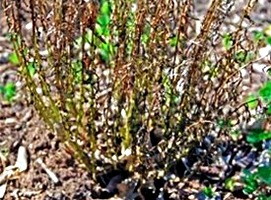5 Reasons Why Your Drought Tolerant, Native Plants Died
After making an effort to conserve water and be environmentally friendly, did you have the unfortunate experience of losing your new drought tolerant, native plants?
Here are five reasons why your drought tolerant, native plants likely died:

Fact: All Plants Need Some Water
Your plants may be drought tolerant, but unless they are petroleum based (plastic), silk, or preserved, they are still going to need some water.
Fact: All Plants Need More Water When They are First Planted
Established plants require less water than newly installed plants and irrigation systems are often “dialed back” for the established plants to conserve water. Since new plants are often added around the current plants, irrigation cycles for existing plants may not provide enough water for the new plants to establish themselves. Before you increase your irrigation, continue reading as too much water can be a problem as well.
Fact: Too Much Water Will Kill a Drought Tolerant, Native Plant
Most people tend to overwater, especially when they see a plant wilting. Did you know a plant will also “wilt” when overwatered? The difference is in the leaf: a plant with insufficient water will be crispy while the leaf of a plant with too much water will be moist. Here are some other ways to find out if you are overwatering your plants.
Fact: Not All Native Plants are Meant to be Planted Wherever
As we say in the landscape business, “Right Plant, Right Place.” Before you place a new native plant, find out where the plant is found in nature. Does it like the sun or shade? Does it prefer moist conditions? Salt tolerance is important if you live near the coast or irrigate with reclaimed water (especially with drip irrigation). The soil type makes a difference as some plants like high organic content, which may not exist in your landscape if your topsoil was removed during construction in the last 10 to 15 years.
Fact: Sometimes Plants Die ― Even Drought Tolerant, Native Plants
Sometimes your plants die, but there is usually a core reason.
Your newly installed plants can have a higher mortality rate due to transplant shock, which is one reason why companies and nurseries have a warranty on their plants.
Once your new plant is established, Mother Nature takes over. Critters (insects, rodents, dogs, etc.) will suck, chew, or urinate on your plants, resulting in its death. Diseases require very specific conditions and can come and go, but when the micro climate is optimal, a disease can become a major problem. The good news is that only specific species are usually victimized.
Some plants will just die of old age. How many years does a plant live? It depends on the plant. As a general rule, trees live longer than shrubs, which live longer than perennials. Annuals are usually just for show or seasonal agriculture.
Often, a combination of reasons will result in your plant’s death. A primary issue may weaken your plant and cause a chain reaction with one problem leading to another.

